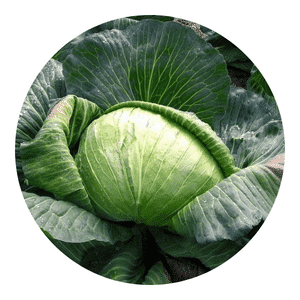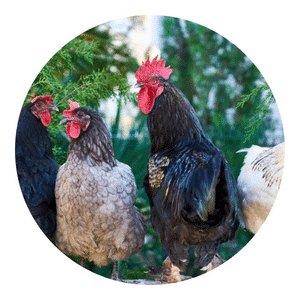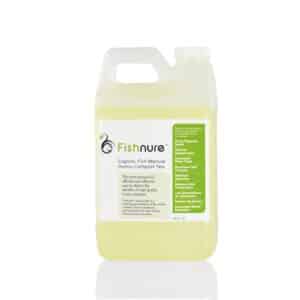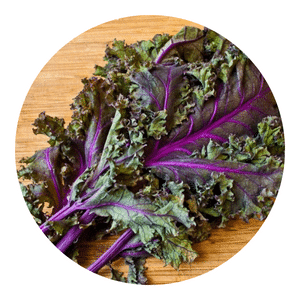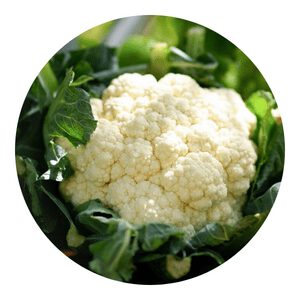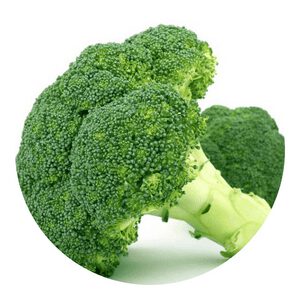Red Acre Cabbage
Chappy the Gardener, a well-known figure in the gardening world, has released a guide on how to grow Red Acre Cabbage.
The guide covers everything from planting to harvesting, and includes tips on how to get the best results.
This is a valuable resource for anyone interested in growing Red Acre Cabbage, and is sure to be a hit with gardeners of all levels of experience.
Red Acre Menu
Red Acre Cabbage is a cool weather crop that can be grown in the spring or fall. It prefers full sun and well-drained soil.
Red Acre Cabbage can be started from seed, transplanted, or direct seeded.
The plants grow to about 2-3 feet tall and have deep green leaves with red veins. The head of the cabbage is round and red.
Red Acre Cabbage is ready to harvest in 60-70 days.
Soil preparation
Cabbage is a cool-weather crop that does best in full sun. The soil should be rich in organic matter and well-drained.
Prepare the bed by turning the soil to a depth of 8 to 10 inches.
Add compost or well-rotted manure and work it into the top 6 inches of soil. Cabbage prefers a slightly acidic soil with a pH of 6.0 to 6.8; if your soil is alkaline, add sulfur to lower the pH.
To encourage deep root growth, loosen the soil around each plant to a depth of 12 inches with a hoe or spade fork before planting.
When transplanting, set cabbage plants 18 to 24 inches apart in rows 30 to 36 inches apart. Firm the soil gently around each plant after transplanting.
Planting
To sow seeds, plant them ¼ inch deep in moistened soil and keep them evenly moist until they germinate.
Thin the seedlings to 12-18 inches apart when they are 4 inches tall. For a fall crop, sow the seeds in late summer.
To transplant starts, choose plants that are 6-8 weeks old and set them 18-24 inches apart.
Be sure to water them well after planting. Red Acre cabbage is ready to harvest 60-70 days after planting.
Fertilizing
Before planting, work compost or manure into the soil to provide nutrients.
Cabbage is a heavy feeder and will benefit from additional fertilizer during the growing season.
Apply a balanced fertilizer, such manure or compost, when plants are 6 to 8 inches tall and again when they begin to form heads.
Be sure to follow directions on the fertilizer package; too much nitrogen will cause the plant to produce lots of leaves but no head.
Watering
To ensure a bountiful harvest, water your red acre cabbage regularly. The soil should be kept moist, but not soggy.
Water early in the day so the leaves have time to dry before nightfall.
Use a soaker hose or drip irrigation system to avoid wetting the foliage, which can lead to fungal diseases.
Use a hoe to loosen the soil around the roots of the plant. Water the cabbage plants deeply about once per week. Weed and thin the cabbage plants as needed. Watch for pests and diseases affecting the cabbage plants. Harvest red acre cabbage when it is fully mature.
Chappy The Gardener
Pest control
Pest control is an important part of growing any crop, and cabbage is no exception.
There are a few common pests that can attack cabbage, including slugs, caterpillars, and aphids.
Slugs can be controlled by hand picking or by using a bait such as iron phosphate.
Caterpillars can be controlled with Bacillus thuringiensis (BT) or spinosad insecticides. Aphids can be controlled with horticultural oil, neem oil, or insecticidal soap.
It is important to monitor your cabbage plants for signs of pests and to take action as soon as possible.
By taking preventive measures and using the appropriate pest control methods, you can keep your cabbage crop healthy and free of pests.
Harvesting
In late summer or early fall, you can begin to harvest red acre cabbage.
This type of cabbage is ready to harvest when the heads are firm and the leaves are crisp.
You will want to cut the cabbage heads off at the base, being careful not to damage the rest of the plant.
Once you have harvested all of the cabbage heads, you can remove the plants from the garden.
What month do you plant red cabbage?
Red cabbage is a cool weather crop that is typically planted in early to mid-spring.
The soil should be prepared by tilling it to a depth of 12 inches and adding organic matter.
The seeds should be sown ½ inch deep in rows that are 24-36 inches apart.
When the seedlings are 4-6 inches tall, thin them so that they are spaced 12-18 inches apart.
Red cabbage needs consistent moisture and should be watered on a regular basis, especially during hot, dry weather.
Fertilize the plants every 2-3 weeks with a organic fertilizer such as manure.
For best flavor, harvest the heads when they are 6-8 inches in diameter.
What is the best way to grow red cabbage?
Sow seeds ½ inch deep and 2 inches apart in rows 18 inches apart. When the seedlings are 4 to 6 inches tall, thin them so they are 12 to 18 inches apart.
Apply a layer of mulch around the plants to help retain moisture and control weeds. Water red cabbage regularly, especially during dry periods.
To harvest, cut the entire head of cabbage from the plant with a sharp knife. Red cabbage will keep for up to two weeks when stored in a cool, dry place.
How long does it take red cabbage to grow?
It takes about 2-3 months for red cabbage to grow. The best time to plant it is in early spring, about a month before the last frost.
Red cabbage prefers cool weather and will not do well in hot weather. It should be planted in full sun or partial shade.
The soil should be rich and moist but well-drained.
Red cabbage can be started from seed or transplants. If you are starting from seed, sow the seeds indoors about 6 weeks before the last frost date.
Transplants should be set out about 2 weeks before the last frost date. Space the plants 18-24 inches apart in rows that are 24-36 inches apart.
Is Red Acre Cabbage heat tolerant?
Red Acre cabbage is a heat tolerant variety of cabbage that can be grown in a wide range of climates.
The plant is known for its ability to withstand high temperatures, making it a good choice for gardeners in warm regions.
Red Acre cabbage is also relatively drought tolerant, so it can be grown in areas with low rainfall.
Does red cabbage need a lot of water?
Red cabbage is a hearty, cool weather vegetable that doesn’t require a lot of water to thrive.
In fact, too much water can actually lead to problems like blossom end rot and split heads.
Water your red cabbage once or twice a week, depending on the weather and the amount of rainfall.
If you live in an area with high humidity, you may need to water more frequently to prevent the leaves from turning yellow or brown.
What is the best organic fertilizer for cabbage?
Red Acre cabbage is a hardy vegetable that can be grown in a wide range of climates and soil types.
While it is possible to grow Red Acre without using any fertilizer, organic methods are always best for both the environment and your plants.
There are a few different types of organic fertilizer that can be used on Red Acre cabbage, but manure is often considered the best option.
Manure helps to improve drainage while also providing essential nutrients that help the plant to grow strong and healthy.
Another type of organic fertilizer that can be used on Red Acre cabbage is compost.
Compost is rich in nutrients and microorganisms that help to improve the quality of the soil. It can also help to retain moisture, which is important in areas with high temperatures or little rainfall.
Horse Manure
Horse manure is an excellent fertilizer for red cabbage, as it is rich in nitrogen and other nutrients that plants need to thrive.
To use horse manure fertilizer, simply spread it around the base of the plant, being careful not to get any on the leaves.
Water the area well and allow the horse manure to break down into the soil before planting.
Donkey Manure
Red cabbage is a cool weather crop that can be grown in the spring or fall. It prefers full sun but will tolerate some shade.
The soil should be rich, loose, and well-drained. Red cabbage can be started from seed or transplants.
Donkey manure fertilizer is an excellent choice for red cabbage.
Apply the manure to the soil before planting and side dress during the growing season.
Be sure to water the plants well after applying fertilizer.
Chicken Manure
To use chicken manure fertilizer, first gather fresh chicken manure and mix it with an equal amount of water.
Next, apply the mixture to the soil around your red cabbage plants, taking care to avoid getting any on the leaves.
Do this once a month during the growing season.
Chicken manure is high in nitrogen and other nutrients that plants need to thrive. It also helps to improve soil drainage and aeration.
However, chicken manure can also burn plant roots if it is not diluted properly.
That’s why it’s important to follow the instructions above and only apply chicken manure fertilizer to your red cabbage plants monthly.
Fish Manure
Many gardeners are looking for ways to be more sustainable and reduce their reliance on synthetic fertilizers.
One way to do this is by using fish manure fertilizer to grow red cabbage.
Fish manure is an excellent source of nutrients for plants, including nitrogen, phosphorus, and potassium.
It also contains trace elements that are essential for plant growth, such as iron, zinc, and manganese.
Fish manure can be applied directly to the soil or diluted and used as a liquid fertilizer.
To use fish manure fertilizer to grow red cabbage, mix it with water at a ratio of 1:3 or 1:5.
Apply the mixture to the soil around the base of the plants once every two weeks.
Be sure to wear gloves when applying fish manure, as it can be very smelly!
Does cabbage regrow after cutting?
Cabbage is a cool-weather crop that does well in many home gardens.
Head cabbage, the kind most often seen in the grocery store, takes about 80 days from seed to harvest.
Because cabbage is a slow-growing vegetable, it’s not usually worth the effort to try to regrow it from scraps.
However, you can regrow other types of cabbage (such as Bok choy) from cuttings.
To do this, cut off the bottom 2-3 inches of a healthy plant and place it in a jar or glass of water.
Place the container in a sunny spot and wait for new leaves to sprout, which usually takes 1-2 weeks.
When the new leaves are several inches long, transplant the cutting into potting soil or your garden bed.
Can red cabbage be grown in hydroponics?
Red cabbage is a cool weather crop that can be grown in hydroponics.
The plants do best in temperatures between 60-70 degrees Fahrenheit and need at least six hours of sunlight per day.
Red cabbage requires a well-ventilated growing area and plenty of humidity.
The plants should be watered regularly, and the roots should never be allowed to dry out.
A nutrient solution designed for leafy greens will provide the nutrients the plants need to grow.
How long does it take for cabbage to grow hydroponically?
Growing Red Acre cabbage hydroponically takes about the same amount of time as growing it in soil–55 to 70 days.
The main difference is that hydroponic crops generally grow a little more quickly and with less water and fertilizer than those grown in soil.
To get started, you’ll need some basic supplies: cabbage seeds, a grow light (if you’re growing indoors), a container for your plants, an air pump and stone, and nutrient solution.
You can buy a complete hydroponic kit online or at a garden center.
Fill your container with a soilless mix or gravel, then add water and nutrients.
Sow the seeds thinly on the surface of the mix, then cover with another layer of mix or gravel.
Place the container under your grow light and keep the temperature around 70 degrees Fahrenheit.
Can you grow red cabbage in a greenhouse?
Red acre cabbage is a cool weather crop that can be grown in a greenhouse.
The key to growing red cabbage in a greenhouse is to provide enough ventilation and light.
Red cabbage requires at least six hours of sunlight per day. If the temperature in the greenhouse gets too hot, the cabbage will bolt and produce seed heads.
Red cabbage can be direct seeded or started indoors and then transplanted into the greenhouse.
In conclusion, the best way to grow red acre cabbage is by following the guide provided by chappy the gardener.
With this guide, you will be able to successfully grow red acre cabbage in your own garden.
If you have any questions, feel free to ask them in the comments below.
Click To Grow
Helps Us Grow – Share If You Like





